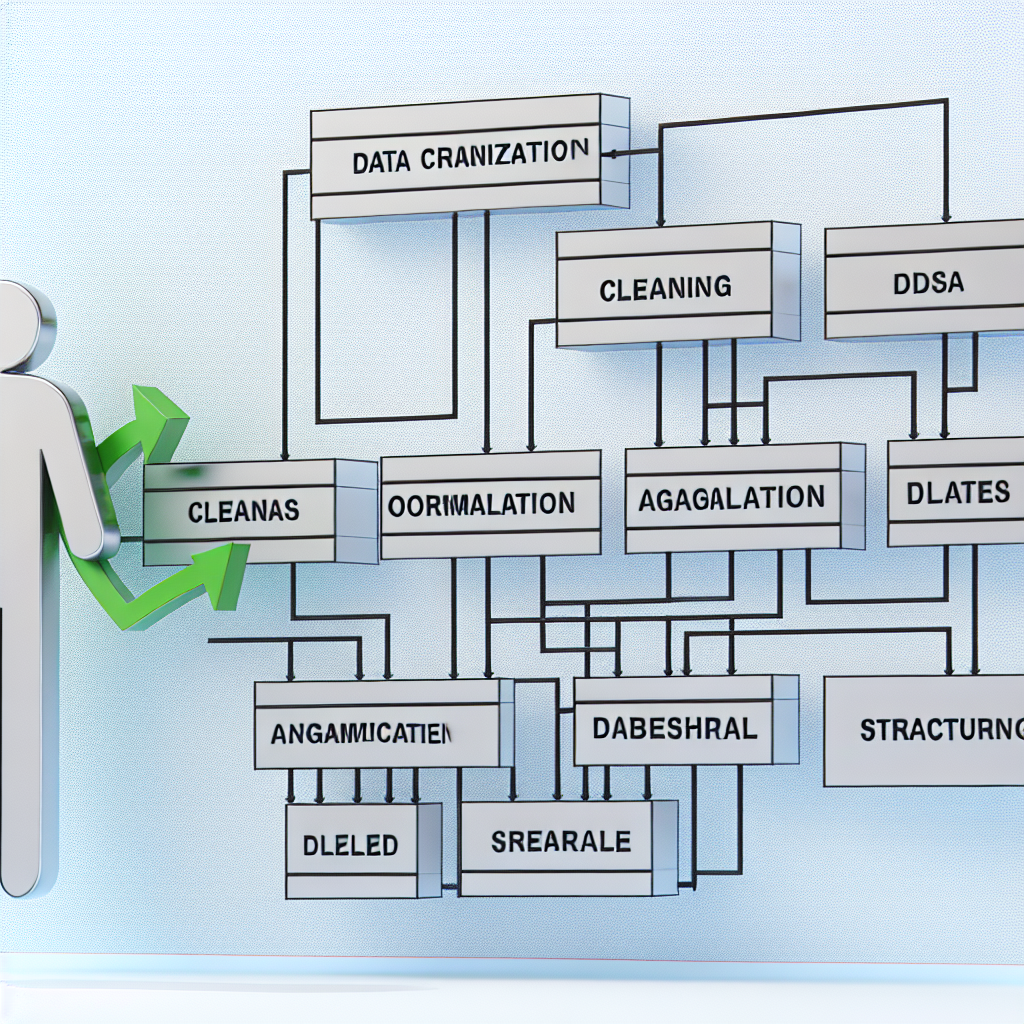Essential Data Wrangling Techniques: Mastering the Art in 2025
- Data Wrangling and ETL Processes
- Advanced Data Cleaning Techniques
- Ensuring Data Quality
- Emerging Trends in Data Wrangling
- FAQ
- Conclusion
Data Wrangling and ETL Processes
The ETL (Extract, Transform, Load) process is a foundational element of data wrangling. Organizations extract raw data from various sources, transform it into a usable format, and load it into data warehouses. This process ensures that companies can draw meaningful insights from their data warehouses. Tools like Apache NiFi and Talend have gained popularity for facilitating these processes. In 2025, the use of cloud-based ETL services such as Google Cloud Dataflow and AWS Glue has become prominent due to their scalability and flexibility.
Data wrangling tools ensure that raw data gets transformed into a clean and analyzable state. Python libraries such as pandas and Dask, known for their data manipulation capabilities, remain crucial in this space. Advanced users also embrace Apache Spark for its in-memory processing speed, which is particularly useful for large datasets.
Advanced Data Cleaning Techniques
Data cleaning is an integral part of data wrangling where inaccuracies, inconsistencies, and duplicates are identified and corrected. Techniques such as outlier detection and handling missing values are essential. The real challenge lies in creating custom cleaning processes tailored to specific datasets and industries.
For example, businesses dealing with customer data may use name-matching algorithms to unify disparate records, leveraging fuzzy logic to reduce duplicates. The rise of AI in data cleaning, using machine learning models to predict missing values, has significantly enhanced automation in this realm.
Ensuring Data Quality
Data quality is the backbone of any data-centric decision-making process. Poor data quality can lead to incorrect analytics and misguided strategies. Ensuring data quality involves establishing data governance frameworks, which include setting data standards and implementing validation rules. Profiling tools like Great Expectations provide automated testing and documentation capabilities, allowing data teams to monitor and maintain data reliability.
An example of high data quality in practice is Netflix, which ensures its recommender systems work flawlessly by constantly vetting the data inputs for accuracy and consistency. Effective data wrangling is supported by consistent data quality audits and real-time monitoring to catch issues promptly.
Emerging Trends in Data Wrangling
Data wrangling continues to evolve with advancements in AI and machine learning. AutoML tools now assist in automating end-to-end data pipelines, reducing manual intervention. These tools utilize AI to identify optimal transformation paths and predict potential errors before they occur.
Another trend is the integration of natural language processing (NLP) to make unstructured data more accessible and understandable. Data from social media, customer feedback, and reviews is better utilized with effective NLP processing, enabling nuanced sentiment analysis and customer behavior predictions.
For more insights into trends in AI and machine learning, check out our latest articles on AI.
FAQ
What is data wrangling in data science?
Data wrangling is the process of cleaning and unifying complex data sets for easy access and analysis. It involves transforming raw data into a more digestible format, ensuring it meets quality standards.
How is ETL related to data wrangling?
ETL stands for Extract, Transform, Load. It simplifies the data wrangling process by systematically extracting raw data, transforming it into a proper format, and loading it into a data warehouse.
What tools are used in the data wrangling process?
Tools like Apache Spark, Python’s pandas library, and cloud services like Google Cloud Dataflow are commonly used for data wrangling. These tools help organize and process large datasets efficiently.
Why is data quality important?
Data quality is crucial because poor quality data can lead to incorrect analytics and misguided business decisions. High-quality data ensures accurate insights and improved strategic planning.
Conclusion
Data wrangling techniques are indispensable for extracting value from raw data, driving competitive advantage in today’s information-driven industries. As we progress through 2025, the integration of AI, enhanced cleaning techniques, and stringent quality controls are paving the way for more efficient data processing. Professionals aiming to excel in AI and data science should focus on mastering these techniques, exploring advanced tools, and staying abreast of emerging trends.
To dive deeper into AI applications and data science strategies, explore our comprehensive guide section. Stay updated with the latest advancements by subscribing to our newsletter. Transform your data wrangling skills today!
For more in-depth discussions on data wrangling, check this Scaling Challenges in AI.



